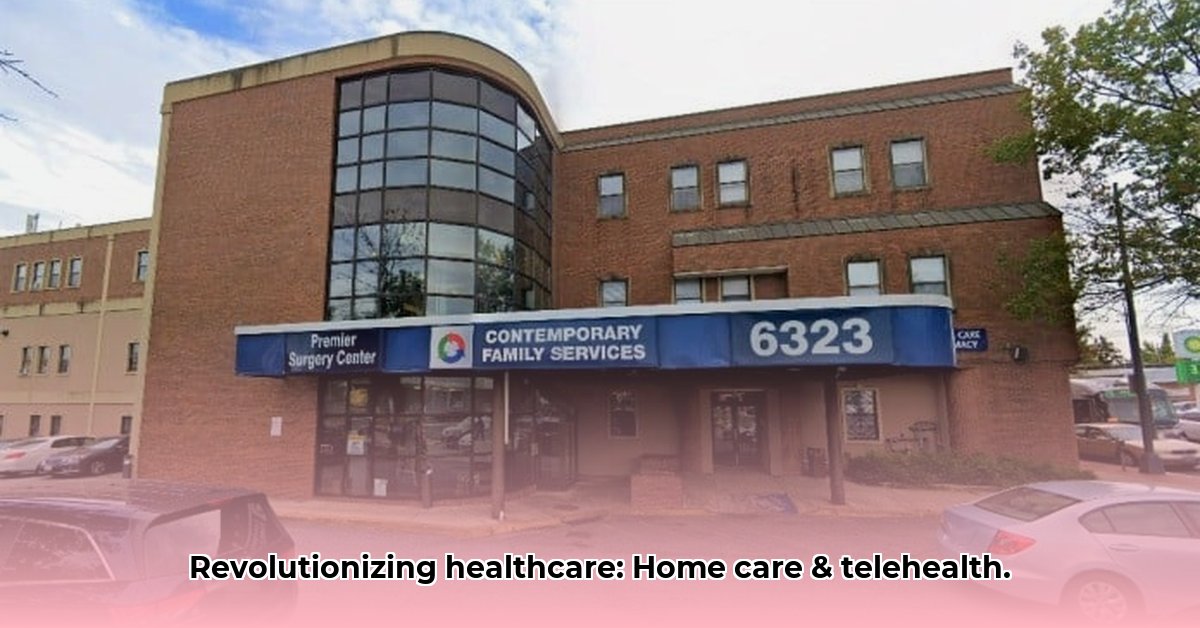
6323 Georgia Ave NW Washington DC: A Healthcare Transformation
Imagine a world where healthcare visits don't require battling traffic or enduring long waits in crowded offices. Instead, your healthcare provider comes to you, or connects with you virtually, right from your home. This isn't science fiction; it's the reality of home-based care and telehealth, rapidly transforming healthcare access in Washington, D.C., particularly in neighborhoods like the one surrounding 6323 Georgia Avenue NW. For more on innovative care models, check out this resource. This isn't simply about convenience; it's about fundamentally altering how we experience and receive healthcare.
Home-Based Care: A Doctor's House Call, Reimagined
The image of a doctor making house calls often evokes a sense of nostalgia, a bygone era of personalized care. However, modern home-based care is far more sophisticated. Providers like Affinity Health, operating in the 6323 Georgia Avenue area, are at the forefront of this evolution, seamlessly blending in-home visits with telehealth capabilities. This integrated approach provides personalized care tailored to individual needs, proving particularly valuable for managing chronic conditions. Patients can receive routine checkups, medication management support, and specialized therapies—all within the comfort and familiarity of their homes.
But, is this model truly cost-effective in the long run? The long-term impact on healthcare expenses and overall patient outcomes is still under investigation. Researchers are currently comparing the cost-effectiveness of home-based care against traditional models, analyzing factors such as patient satisfaction and health improvements. While initial findings are encouraging, further data is needed to reach definitive conclusions about the overall value proposition. Studies directly comparing in-home care to office visits are crucial for a complete understanding. How do these models compare in terms of patient satisfaction and health outcomes across diverse demographics? This is a question that demands further research.
Telehealth: Healthcare at Your Fingertips
Telehealth, a vital component of modern home-based care, leverages technology to bring healthcare directly into patients' homes. This virtual healthcare model connects patients with doctors via video calls, messaging platforms, and remote monitoring devices. For residents near 6323 Georgia Avenue, telehealth bridges geographical barriers and expands access to specialists who might otherwise be unreachable. It offers a convenient alternative for those with mobility challenges or busy schedules. But does everyone have equitable access to these benefits?
The digital divide, the gap between those with and without reliable internet access and the digital literacy to utilize it, poses a formidable obstacle. Ensuring that everyone benefits from telehealth, irrespective of socioeconomic status, is paramount for equitable healthcare access. This requires substantial investment in improved internet infrastructure, affordable devices, and comprehensive digital literacy training programs. Isn't bridging this digital divide crucial for truly inclusive healthcare? This question highlights the social equity challenges inherent in telehealth implementation.
Traditional Healthcare: A Look at the Established Model
To fully appreciate the transformative potential of home-based and telehealth services, a comparison with traditional healthcare models is essential. Practices like Largo Medical Associates (located near 6323 Georgia Avenue) exemplify the established approach: patients schedule appointments and travel to the doctor's office. This familiar system has its advantages—established routines and procedures—but it also has significant limitations. Transportation challenges, mobility issues, and conflicting work schedules can severely limit access for many individuals.
Comprehensive data comparing outcomes and costs across these different models are currently limited. This scarcity of data makes it difficult to directly compare patient satisfaction, cost-effectiveness, and health outcomes between traditional care and the newer models. More robust research is needed, particularly focusing on specific patient demographics, to fully understand the comparative benefits of each approach.
The Challenges and Opportunities: Navigating the New Landscape
Both home-based and telehealth care face numerous challenges. Evolving regulatory frameworks and reimbursement policies create uncertainty for providers. Data privacy and security concerns demand vigilant attention, emphasizing the need for strong security protocols to safeguard sensitive patient information. Despite these hurdles, the potential gains are substantial. These innovative models offer the potential for improved patient outcomes, reduced hospital readmissions (resulting in cost savings for both patients and the healthcare system), and increased efficiency in healthcare delivery.
A Collaborative Path Forward: Working Together for Better Care
Unlocking the full potential of these transformative healthcare approaches in the 6323 Georgia Avenue area and beyond demands a collaborative effort. Successful implementation hinges on the collaboration of healthcare providers, managed care organizations, patients themselves, and policymakers. Each group must play a crucial role in ensuring the equitable and widespread adoption of these new models.
The Future of Healthcare: A Home-Centered Approach?
The healthcare landscape is undergoing rapid and significant changes. Home-based primary care and telehealth represent a powerful path toward creating a more accessible, affordable, and effective healthcare system. However, realizing this bold vision necessitates unwavering commitment from stakeholders across the board. Overcoming the existing challenges will require effective collaboration, proactive planning, and a shared dedication to fostering innovation and equity in healthcare access.